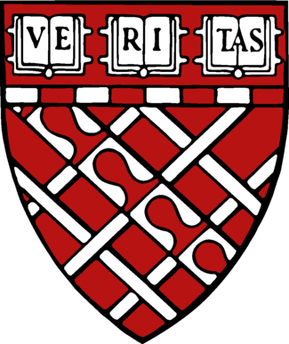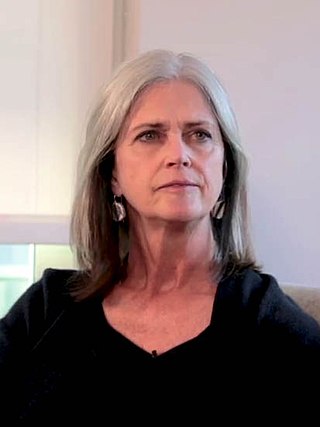Related Research Articles
Charles Willard Moore was an American architect, educator, writer, Fellow of the American Institute of Architects, and winner of the AIA Gold Medal in 1991. He is often labeled as the father of postmodernism. His work as an educator was important to a generation of American architects who read his books or studied with him at one of the several universities where he taught.

California College of the Arts (CCA) is a private art school in San Francisco, California. It was founded in Berkeley, California in 1907 and moved to a historic estate in Oakland, California in 1922. In 1996 it opened a second campus in San Francisco; in 2022, the Oakland campus was closed and merged into the San Francisco campus. CCA enrolls approximately 1,239 undergraduates and 380 graduate students.

The Harvard Graduate School of Design (GSD) is the graduate school of design at Harvard University, a private research university in Cambridge, Massachusetts. It offers master's and doctoral programs in architecture, landscape architecture, urban planning, urban design, real estate, design engineering, and design studies.

Serge Ivan Chermayeff was a Russian-born British architect, industrial designer, writer, and co-founder of several architectural societies, including the American Society of Planners and Architects.

Holmes Run Acres is a community of 355 houses in Fairfax County, Virginia, in the Washington, D.C. suburbs. Nearly all of the neighborhood is within the Holmes Run Acres Historic District, listed on the National Register of Historic Places.
The campus of the University of California, Berkeley and its surrounding community are home to a number of notable buildings by early 20th-century campus architect John Galen Howard, his peer Bernard Maybeck, and their colleague Julia Morgan. Subsequent tenures as supervising architect held by George W. Kelham and Arthur Brown, Jr. saw the addition of several buildings in neoclassical and other revival styles, while the building boom after World War II introduced modernist buildings by architects such as Vernon DeMars, Joseph Esherick, John Carl Warnecke, Gardner Dailey, Anshen & Allen, and Skidmore, Owings and Merrill. Recent decades have seen additions including the postmodernist Haas School of Business by Charles Willard Moore, Soda Hall by Edward Larrabee Barnes, and the East Asian Library by Tod Williams Billie Tsien Architects.
Mario Joseph Ciampi was an American architect and urban planner best known for his modern design influence on public spaces and buildings in the San Francisco Bay Area.

Denise Scott Brown is an American architect, planner, writer, educator, and principal of the firm Venturi, Scott Brown and Associates in Philadelphia. Scott Brown and her husband and partner, Robert Venturi, are regarded as among the most influential architects of the twentieth century, both through their architecture and planning, and theoretical writing and teaching.
Joseph Richmond Levenson was a scholar of Chinese history and Jane K. Sather Professor of History at the University of California, Berkeley.

William T. Cannady is an American architect who has designed over two hundred projects. He is also a professor of architecture who has taught design to over one thousand students.
William W. Schwarzer was a United States district judge of the United States District Court for the Northern District of California.

Lawrence Scarpa is an American architect based in Los Angeles, California. He used conventional materials in unexpected ways and is considered a pioneer and leader in the field of sustainable design.

Yung Ho Chang is a Chinese-American architect and Professor of MIT Architecture. He was formerly the head of the Department of Architecture at MIT.
Patrick Horsbrugh was a British architecture professor. Born in Belfast, he took an interest in architecture at a young age, but his studies were interrupted by military service during World War II. Following the conflict he studied in Britain and the United States before embarking on teaching career that spanned numerous major American universities. He also competed for Great Britain at the art competitions at the 1948 Summer Olympics. As a researcher, he coined the term "environics" to cover the study of the environmental implications of modern architecture development and taught courses on the subject until his retirement. He held the title of professor emeritus at the University of Notre Dame until his death in January 2014.
Esherick Homsey Dodge and Davis is a United States-based architecture, interiors, planning and urban design firm. EHDD, ranked among the top 20 architecture firms in the San Francisco Bay Area, where it is headquartered, is known especially for seismically safe, sustainable designs. From its early residential work, to The Sea Ranch and Monterey Bay Aquarium, to more recent LEED certified and net-zero buildings, the firm is recognized for collaboration, commitment to innovation and investigation, and responsiveness to location, light, and climate.

Deborah Berke is an American architect and academic. She is the founder of Deborah Berke Partners, a New York City-based design firm. Berke is the J.M. Hoppin Professor at the Yale School of Architecture, where she has taught since 1987. Since 2016, Berke has served as the school's Dean, making her the first woman to hold the position.
Albert Szabo (1925-2003) was an American architect, educator and artist. He was born in Brooklyn, New York on November 7, 1925, to Benjamin Szabo of Felso Viso, Hungary (1885–1964) and Jeanette Szabo of New York, New York (1895–1980). Szabo was a tenured professor of architecture at the Harvard Graduate School of Design (GSD) and at the Department of Visual and Environmental Studies (VES), Carpenter Center for the Visual Arts. He co-founded the latter, together with Eduard Sekler in 1968. He was author, with his wife, architect Brenda Dyer Szabo (1926–2017), of “Preliminary Notes on the Indigenous Architecture of Afghanistan” and, with anthropologist, Thomas Barfield, of, “Afghanistan: An Atlas of Indigenous Domestic Architecture”. He died in Cambridge, MA on December 17, 2003.
References
- ↑ "GERALD M. MCCUE (B.A. ARCHITECTURE, 1951; M.A. ARCHITECTURE, 1952)". University of California, Berkeley. Retrieved 8 April 2022.
- ↑ "Gerald Mallon McCue (Architect)". Pacific Coast Architecture Database. Retrieved 8 April 2022.
- ↑ "Gerald McCue". Harvard Graduate School of Design. Retrieved 8 April 2022.
- ↑ "The Gerald M. McCue Professor of Architecture is established". The Harvard Gazette. 20 March 2003. Retrieved 8 April 2022.
- ↑ "Cohen named new chair of Department of Architecture". The Harvard Crimson. 15 May 2008. Retrieved 8 April 2022.